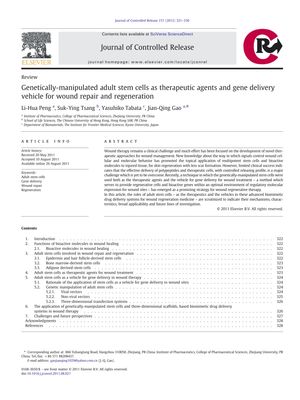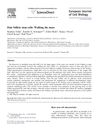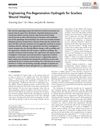Genetically-Manipulated Adult Stem Cells as Therapeutic Agents and Gene Delivery Vehicles for Wound Repair and Regeneration
August 2011
in “
Journal of Controlled Release
”
genetically-manipulated adult stem cells epidermis hair follicles bone marrow adipose tissue re-epithelialization differentiation revascularization collagen gene expression repigmentation hair follicle neogenesis adipose-derived stem cells dermal fibroblast proliferation collagen synthesis angiogenesis immunomodulatory effects bone marrow-derived stem cells epidermis derived stem cells hair follicle-derived stem cells gene delivery viral vectors non-viral vectors liposome vectors regenerative medicine ADSCs BMSCs ESCs HFSCs

TLDR Genetically-altered adult stem cells can help in wound healing and are becoming crucial in regenerative medicine and drug design.
In 2012, a study explored the use of genetically-manipulated adult stem cells, specifically from the epidermis, hair follicles, bone marrow, and adipose tissue, for wound repair and regeneration. The stem cells played multiple roles in wound healing, including re-epithelialization, differentiation, revascularization, collagen gene expression, repigmentation, and hair follicle neogenesis. Adipose-derived stem cells (ADSCs) were found to promote dermal fibroblast proliferation and migration, enhance collagen synthesis and re-epithelialization, stimulate angiogenesis, and have immunomodulatory effects. The study also noted the potential of bone marrow-derived stem cells (BMSCs), epidermis derived stem cells (ESCs), and hair follicle-derived stem cells (HFSCs) in wound healing, but BMSCs' differentiation abilities decrease with age. The study also investigated the use of adult stem cells as a vehicle for gene delivery in wound therapy, using both viral and non-viral vectors. Despite progress, the low frequency of stable transfection was a major drawback of liposome vectors. The study concluded that the use of genetically-manipulated stem cells in wound therapy was becoming increasingly important in regenerative medicine and pharmaceutical design.

